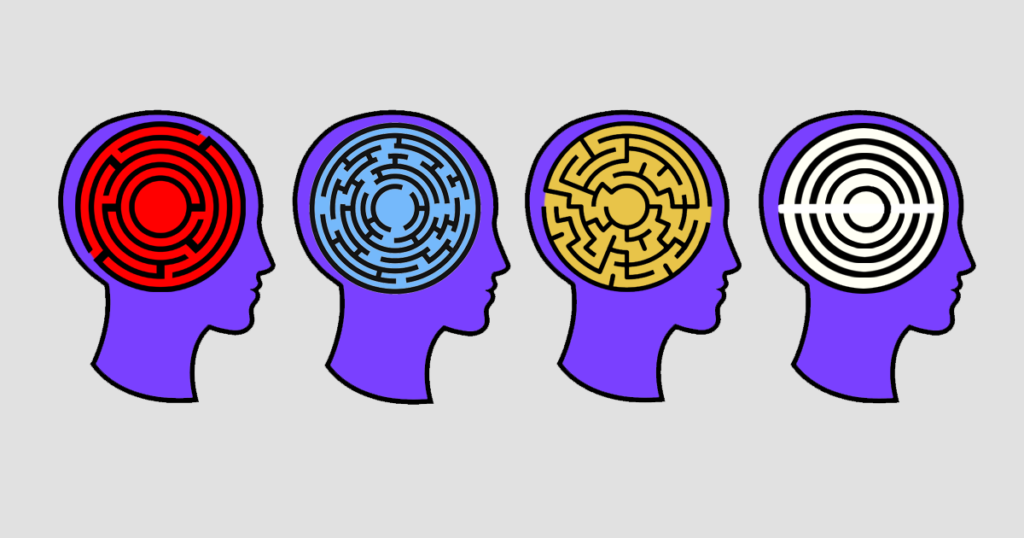Overcoming Buyer Effort
Rick Gregg August 01,2024 What do you think?

In my last post, I discussed the importance of uncovering the extreme customer pain of Inertia. In part two of this four part series, I will continue my discussion of the four frictions that cause innovation headwinds and prevent your customer from buying. In summary, these frictions are: 1) Inertia (part one), 2) Effort (this post), 3) Emotion; and 4) Reactance.
Why We Follow the Path of Least Resistance
The Law of Least Effort captures the idea that humans are programmed to find and favor the path that brings the most rewards with the least possible effort. In their groundbreaking 2022 book “The Human Element,” authors Loran Nordgren and David Schonthal conclude that “when we first encounter a new idea or innovation, our minds instinctively calculate the cost of implementation.” The Effort associated with innovation is a psychological friction that undermines the appeal of new ideas. Though we often aren’t aware of its influence, the instinct to minimize Effort is perhaps the most powerful force operating on our decisions. The preference for the easier path is so fundamental, our perceptual system is engineered to make easier options look more appealing.
Changing the Effort Calculus
When people consider a new idea or opportunity, the first consideration isn’t the benefits or value of the idea. The primary concern is the cost of the action. Reducing the cost of a new idea will make people more open to that idea. The lesson for innovators is that small changes can have a big impact. Finding ways to make the behavior you want just a little bit easier can change behavior substantially. Although Effort is one of the strongest forces operating on our behavior, people rarely account for it when leading change – a blind spot known as Effort Neglect.
When Effort is Valued
People don’t always choose the path of least resistance. There are many contexts in which people actively seek out the road less travelled. The Effort required to play a video game is high, but the game player will put incredible time, attention, and mental Effort into the video game experience because it is enjoyable to them. How much time you spend volunteering each month is a strong signal of your commitment to humanitarianism. Doing more gives you greater bragging rights. Finally, people will often seek out physical and mental exertion as a cure for boredom. Boredom is a negative emotional state that people try to avoid. Engaging in a challenging task can offer relief.
Overcoming Effort
Before we can reduce Effort, we need to understand what is meant by it. Effort has two dimensions, one obvious and one not. The obvious and intuitive dimension of Effort is exertion. Exertion captures how much energy goes into a task or behavior. A second dimension of Effort is ambiguity which reflects whether people know how to achieve the goal they are interested in reaching. If you don’t know the way, you must discover the path yourself. That means trial-and-error. It means false leads and dead ends. Ambiguity is a critical dimension of Effort because a lot of ideas that appear easy to the innovator are shrouded in ambiguity for everyone else. Ambiguity is overcome through a process known as creating a roadmap, while exertion is transformed by streamlining the behavior.
Creating a Roadmap
By creating a path to follow, the cost of exploration is reduced by clearing a path to action. A lot of behavior that would be categorized as apathy is really ambiguity. People want to be shown the way or they won’t act – they’ll look apathetic to everyone else, but they just want guidance. Another benefit of creating a roadmap is that it helps people remember to perform an act. Simply forgetting the behavior is a big reason people fail to embrace new ideas. Road mapping tackles forgetfulness by creating a clear link in your memory between a future moment and the correct behavioral response to that moment.
Streamlining the Behavior
The greater the Effort required, the stronger the resistance to change. If the Effort in your idea is causing resistance, your job is to find ways to make change easier. Your goal is to remove drag by making your idea sleek and aerodynamic. This is known as streamlining. Streamlining involves knocking down barriers and finding shortcuts by spotting the points of friction. Sometimes they are self-evident. Having to wait in a long line is a clear and obvious friction. Other times a friction is hidden and can only be revealed through careful discovery.
Using an experience timeline can help discover Effort friction. An experience timeline identifies all the steps a person must take to complete a desired action. Experience timelines are moment by moment visual representations, where the leftmost position on the timeline is the beginning of the experience and the rightmost position represents the end of the experience. The objective of the experience timeline is to help innovators visualize the moments of friction that inhibit change. The key to streamlining is to diagnose which specific steps in a journey are causing the greatest friction, thereby focusing your energy on addressing the moments that matter the most.
We will be using the four frictions during customer discovery when we develop tests to measure the effectiveness of our customer profile and value proposition for our innovative SaaS offering. Want to learn more? Check out The Human Element book for more information and examples.
The saasmvp Project is dedicated to helping SaaS Entrepreneurs who want to create a repeatable business model that generates revenue with minimal financial risk. We’re excited to help you discover your ideal SaaS customer profile and can’t wait to see what you build!